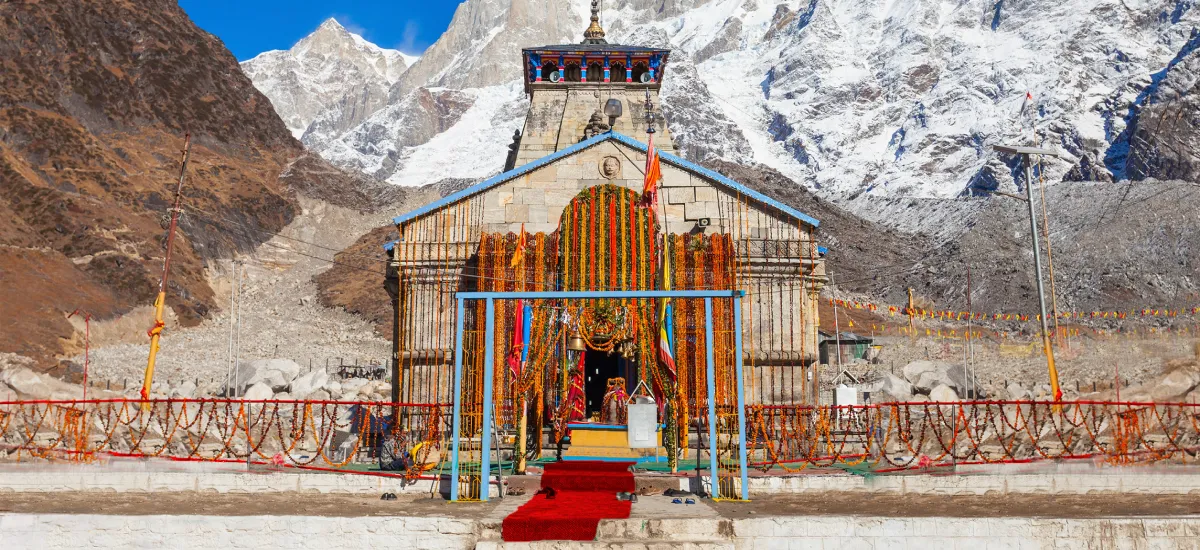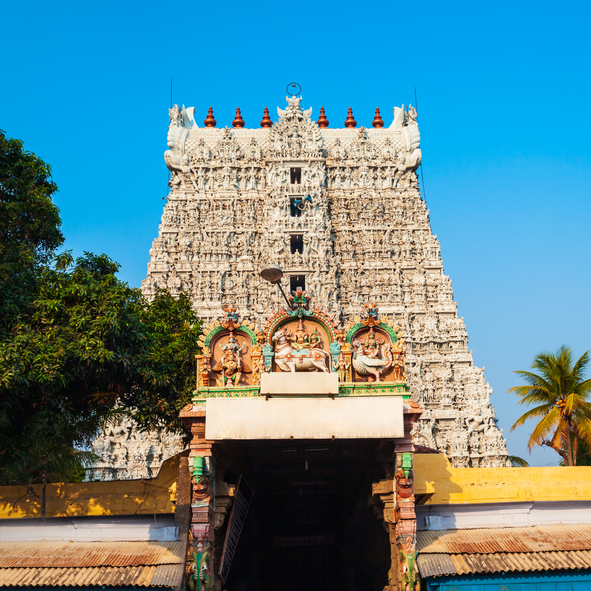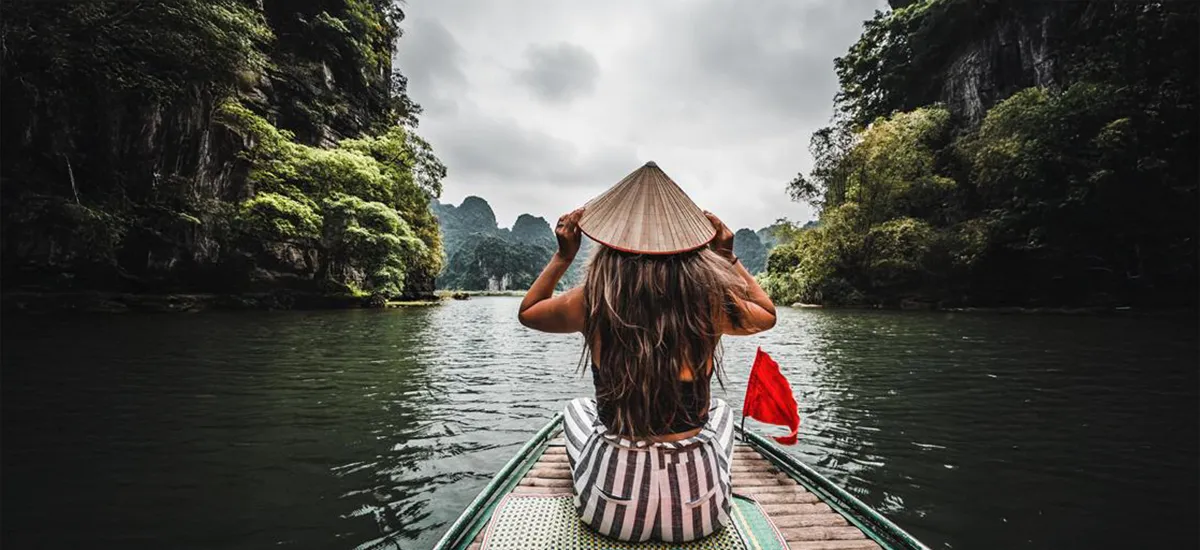Millions of pilgrims travel each year to visit the sacred 12 Jyotirlingas spread across India — a journey steeped in devotion and cultural heritage.
Each Jyotirlinga is considered a manifestation of Lord Shiva, where he is worshipped in the form of a radiant column of light — Jyoti means light, and linga refers to Shiva. These revered sites are not just temples; they are epicentres of spiritual energy, architectural marvels, and significant landmarks of India’s ancient legacy. Whether you're a devout follower, a curious explorer, or a spiritual tourist, visiting the 12 famous Shiva temples in India is a journey that transcends religion — it connects you to the ethos of India itself.
A religious exploration: The 12 Jyotirlingas
Let’s dive into the mystical geography of India and uncover the 12 sacred Shiva lingas in India:
1. Somnath (Gujarat)
Located in Prabhas Patan, this is the first and most prominent Jyotirlinga. It has been rebuilt several times after being plundered, yet it stands as a symbol of resilience and faith.
2. Mallikarjuna (Andhra Pradesh)
Found in Srisailam, this temple is a confluence of Shaivism and Shaktism, located on the banks of the Krishna River and surrounded by forested hills.
3. Mahakaleshwar (Madhya Pradesh)
Situated in Ujjain, this is the only south-facing Jyotirlinga, which is said to protect devotees from untimely death. It’s one of the most visited temples in central India.
4. Omkareshwar (Madhya Pradesh)
On an island shaped like the sacred Om symbol, this temple lies on the Narmada River and is a favourite among meditators and seekers of peace.
5. Kedarnath (Uttarakhand)
Perched high in the Garhwal Himalayas, Kedarnath is a difficult but spiritually rewarding trek, open only for six months due to extreme weather.
6. Bhimashankar (Maharashtra)
Located amidst dense forests near Pune, this is one of the key spiritual places to visit in India where mythology and natural beauty merge. It’s also a hotspot for biodiversity and a top mention when exploring Jyotirlinga in Maharashtra.
7. Kashi Vishwanath (Uttar Pradesh)
One of the most revered temples in Varanasi, this Jyotirlinga is believed to grant moksha (liberation). It’s a must-visit for any spiritual itinerary.
8. Trimbakeshwar (Maharashtra)
Located near Nashik, it’s unique for housing three lingas representing Brahma, Vishnu,and Shiva — symbolising the trinity of creation.
9. Vaidyanath (Jharkhand)
Also known as Baidyanath Dham, this temple is associated with healing and wellness. Pilgrims often walk barefoot for days to reach here during the Shravana month.
10. Nageshwar (Gujarat)
Near Dwarka, this Jyotirlinga represents protection from all physical and metaphorical poisons. The temple features a massive Shiva statue that’s hard to miss.
11. Rameshwaram (Tamil Nadu)
This coastal temple in southern India is closely linked to the Ramayana. It’s also one of the four sacred Char Dhams of Hinduism and one of the most serene spiritual places to visit in India.
12. Grishneshwar (Maharashtra)
Just a few kilometres from the Ellora caves, this is the twelfth and final Jyotirlinga, known for its red sandstone structure and spiritual tranquillity. Add it to your list when exploring how to visit Jyotirlinga in Maharashtra
Smart tips for your travel to the Jyotirlingas
Planning a multi-state spiritual tour? Here are some practical points to make your journey smooth:
·Map out your route: Visiting all 12 famous Shiva temples in India covers a large geographic span. Prioritise by zones if you can’t do all in one go.
·Season matters: Avoid monsoons for hill temples like Kedarnath and Bhimashankar. Winters are perfect for most locations.
·Stay connected: Download offline maps and temple guides. Some areas may have limited internet access.
Footwear etiquette: Carry an easy-to-remove pair of slippers — shoes are not allowed inside temple premises.
·Pack smart: Lightweight clothing, a basic first-aid kit, travel snacks, and reusable water bottles are essential.
Local customs: Respect temple rituals. Dress modestly and avoid photography where it’s restricted.
Secure your travel with travel insurance
While the spiritual journey is fulfilling, the road can be unpredictable. From weather-related delays to medical emergencies or lost baggage, many unexpected disruptions can affect your pilgrimage. This is where travel insurance steps in.
·Medical cover: High-altitude locations like Kedarnath can lead to altitude sickness. Insurance can cover emergency evacuations and treatment costs.
·Trip cancellation: Unforeseen circumstances such as strikes or natural calamities may derail plans. Get reimbursed for non-refundable bookings.
·Baggage loss: Travelling across states increases the chances of misplacement. Travel insurance ensures you don’t return with just spiritual peace but also your belongings.
·Cashless hospitalisation: Many plans offer network hospitals even in tier-2 cities — helpful if you’re far from urban centres.
Choosing Generali Central Travel Insurance offers 24x7 support and comprehensive coverage so you can focus on your journey across the spiritual places to visit in India.
Final thoughts
Whether you plan to explore a few or all 12 Jyotirlingas in India, the journey promises unmatched spiritual and cultural richness. From Kedarnath in the mountains to Rameshwaram by the sea, these Shiva lingas in India reflect the soul of India’s sacred geography.
But devotion doesn’t mean compromising on safety. Protect your yatra with travel insurance and let the divine experience be free from worldly hassles. Ready to begin your journey? Let Generali Central be your trusted companion — spiritually and securely.
FAQs
Q1. Can I visit all 12 Jyotirlingas in one trip?
Yes, though it's ambitious. It requires meticulous planning, around 25–30 days, and substantial travel across multiple states.
Q2. Which is the most visited Jyotirlinga?
Kashi Vishwanath in Varanasi sees the highest footfall, followed closely by Somnath and Kedarnath.
Q3. Is travel insurance necessary for domestic spiritual travel?
Absolutely. With increasing uncertainties like weather changes, transport delays, and medical risks, travel insurance is a wise choice.
Q4. Are all 12 Jyotirlingas accessible by road?
Most are, though places like Kedarnath require a trek of about 16 km or a helicopter ride.
Q5. Is there a best time of year to visit them all?
October to March is ideal, as the weather is generally pleasant, and most temples are open and accessible.
























